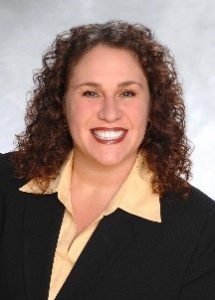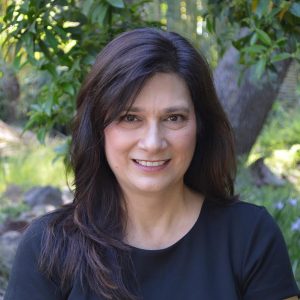HIRING, TRAINING, & EMPLOYEE ENGAGEMENT
Chris Anderson, Silvertrac Software
Business owners in the security industry all have one major problem in common: hiring good employees. The traditional way of hiring through speed and convenience often leads to trouble. Resulting in uninspired employees who quit, get fired, or hurt your company’s reputation.
Companies today separate hiring, training, and employee management. Then spend endless days, weeks, months — not to mention resources — trying to figure out why they can’t find good officers.
This focus is understandable. Owners wear many hats, are strapped for time, and struggle to find balance in their day-to-day work. But what we’ve found over the past 10 years in the security industry is clear.
To see success, you need to look at your business as one well-rounded, well-oiled machine.
This may come as a shock, but it’s important to have good hiring techniques. Good techniques lead to more motivated employees who commit to better training programs. They empower employees to go above and beyond their job roles. And how can you forget the time (and money) you save with a strong process in place.
The result? A successful, well-oiled operation with happier clients, more bids, and more secure contracts.
Below we’ll talk about past lessons we’ve learned, and how they’ve helped security companies like yours build long-term success.
First, what’s your current hiring process? If you’re like most small-to-midsize security companies, you constantly spin your wheels to hire officers. Time is never on your side. You need to fill posts fast and as painless as possible, because every other part of your business demands attention. So how can you put any thought into who you hire?
Remember, these officers represent you and your company. You need to trust and depend on them. That’s why we promote one way to hire officers: Slow Down!
One big reason we say “Slow Down” is because you need more loyal employees. Slowing down your hiring process helps assure candidates are a good fit for your company. You want to know if this person agrees with your work ethic and values. If they are reliable and trustworthy.
A framework like this puts the right people on your team. Which in turn creates a hard-working and motivating environment new hires want to be a part of. Companies who slow down see less hirer’s remorse, lower turnover, and better employee performance.
Second, supervisors play a key role in maintaining this environment, as well as keeping your business running smooth. They are your trusted side-kick. The ones responsible for officers when you’re not around. The way you hire them is how they will hire and manage officers, too. Making our case for hiring slow even more evident to run a top-notch security operation.
Influential supervisors are the next step to building a well-rounded security operation. Officers look to supervisors as mentors, conflict managers, company-messenger, and coach. So when you hire a supervisor who sees eye-to-eye with your values and goals, you set an example for everyone else. It gives them the power to build a strong team, gain officers respect, and make officers more receptive to feedback and training.
Another big challenge you face as a security team is an officer’s lack of motivation and drive. Luckily, it’s something you can change. The steps we discuss will give your team the platform needed to build an empowering culture.
For example, you may have noticed we continue to use the term “officer” versus “guard”. We do this because “officer” gives off a level of professionalism for employees to fulfill. “Guard” is something of lesser status.
Combine solid hiring processes, influential supervisors, and the job title of “Officer”, and what do you get? A foundation where your employees feel they can grow professionally and personally. A place people actually want to work. And a new culture of learning and leadership.
This is something the security industry is notorious for not doing. But the results are undeniable, and it’s radically changing the way we hire and manage officers.
So once you create this new culture, it’s your responsibility to uphold it. Bringing us to your last step: to provide on-going training opportunities for your team.
Training is thought to be a one and done thing — it’s not. It’s an on-going program that includes workshops, on-the-job-training, classes, and more. This allows you to strengthen skills, reduce weak links in the company, and bring everyone to a higher level, so they all have the same knowledge.
Not all training programs are alike, however. We find that great training programs look at three things first: company needs, quality instructors and materials, and training metrics.
Then, the different points of training in the program. This includes basic onboarding, yearly training, self-education, OTJ training with field supervision, and testing. If you don’t test employees, how can you know if your training is effective or not? A complete program helps you determine employee strengths and weaknesses. So you can offer personalized and effective materials for them to be successful.
It’s important to use a variety of training techniques in your program. For example, we recommend the KISS method for onboarding — Keep It Simple Stupid. New hires know little about your procedures and expectations. KISS gives them a good introduction to your company, and the fundamentals they need to succeed. Since everything is laid out beforehand, supervisors don’t have to spend time on the same, avoidable conflicts over and over again.
Educated and happy employees make for a more productive and successful environment. Wouldn’t you agree?
Some security owners complain that hiring and training requirements force them to focus on quick results. But in most cases, it’s actually a failure of process, not the task itself. Owners who focus on slowing down and finding the right fit for their business stand the greatest chance of hiring good officers.
The ultimate goal is to take a step back and see how all these aspects of your business work together. Once you do that, the rest will fall into place. Your team will operate at levels you have never seen. Your clients will be happier than they have ever been, and more contracts will be coming your way. It’s a win-win-win.

 Shaun Kelly joined Tolman & Wiker Insurance Services in 2005. He specializes in all lines of property and casualty insurance for industries including contract security firms, agriculture, construction, oil and gas. Shaun received a BS in Business Administration with a major in Finance from California State University in Fresno, California. He is an active member of several industry associations, including the Association CALSAGA, the Kern County Builders Exchange and the Independent Insurance Agents of Kern County. Shaun can be reached at 661-616-4700 or skelly@tolmanandwiker.com.
Shaun Kelly joined Tolman & Wiker Insurance Services in 2005. He specializes in all lines of property and casualty insurance for industries including contract security firms, agriculture, construction, oil and gas. Shaun received a BS in Business Administration with a major in Finance from California State University in Fresno, California. He is an active member of several industry associations, including the Association CALSAGA, the Kern County Builders Exchange and the Independent Insurance Agents of Kern County. Shaun can be reached at 661-616-4700 or skelly@tolmanandwiker.com.
 Jaimee K. Wellerstein is a Partner at Bradley & Gmelich LLP, and the Head of the firm’s Employment Department. Jaimee concentrates her practice in representing employers in all aspects of employment law, including defense of wage and hour class actions, PAGA claims, discrimination, retaliation, harassment, wrongful discharge, misclassification, and other employment related lawsuits. She also provides employment counseling and training in all of these areas.
Jaimee K. Wellerstein is a Partner at Bradley & Gmelich LLP, and the Head of the firm’s Employment Department. Jaimee concentrates her practice in representing employers in all aspects of employment law, including defense of wage and hour class actions, PAGA claims, discrimination, retaliation, harassment, wrongful discharge, misclassification, and other employment related lawsuits. She also provides employment counseling and training in all of these areas. Annette M. Barber is Special Counsel on Bradley & Gmelich LLP’s Employment Team. She represents clients providing employment advice and counsel in all aspects of hiring, performance management, training, compensation, and termination. Annette spent the past 17 years working with a global security company of 100,000 U.S. employees as an employment law attorney and then as Corporate Vice President directing HR Compliance nationwide for all 50 states, Puerto Rico and Guam.
Annette M. Barber is Special Counsel on Bradley & Gmelich LLP’s Employment Team. She represents clients providing employment advice and counsel in all aspects of hiring, performance management, training, compensation, and termination. Annette spent the past 17 years working with a global security company of 100,000 U.S. employees as an employment law attorney and then as Corporate Vice President directing HR Compliance nationwide for all 50 states, Puerto Rico and Guam. Named to IFSEC’s Global Influencers list 2018 for Security Thought Leadership, Mark is a business school graduate, CPP and Member of The Security Institute (MSyI). Mark’s background is in security services, corporate security, consulting and workforce software. A graduate of Concordia University in HR Management and International Business, he progressed to several senior management roles responsible for security business units across Canada, including serving as the Senior Manager for Corporate Security at Canada’s largest telecommunications company. He launched a consulting business focused on physical security for corporate clients, and has been teaching part-time at the Université de Montréal since 2016. Currently, Mark is the Vice-President, Security and Industry, in the software scaleup TrackTik, and volunteers as SRVP Region 6, Chair of the Security Services Council, the Private Security Officer Standard Technical Committee, and the Private Security Company (PSC.1) working group.
Named to IFSEC’s Global Influencers list 2018 for Security Thought Leadership, Mark is a business school graduate, CPP and Member of The Security Institute (MSyI). Mark’s background is in security services, corporate security, consulting and workforce software. A graduate of Concordia University in HR Management and International Business, he progressed to several senior management roles responsible for security business units across Canada, including serving as the Senior Manager for Corporate Security at Canada’s largest telecommunications company. He launched a consulting business focused on physical security for corporate clients, and has been teaching part-time at the Université de Montréal since 2016. Currently, Mark is the Vice-President, Security and Industry, in the software scaleup TrackTik, and volunteers as SRVP Region 6, Chair of the Security Services Council, the Private Security Officer Standard Technical Committee, and the Private Security Company (PSC.1) working group.
 Jaimee K. Wellerstein is a Partner at Bradley & Gmelich LLP, and the Head of the firm’s Employment Department. Jaimee concentrates her practice in representing employers in all aspects of employment law, including defense of wage and hour class actions, PAGA claims, discrimination, retaliation, harassment, wrongful discharge, misclassification, and other employment related lawsuits. She also provides employment counseling and training in all of these areas. Jaimee routinely represents employers in federal and state courts and in arbitration proceedings throughout the state, as well as at administrative proceedings before the Equal Employment Opportunity Commission, the California Department of Labor Standards Enforcement, the United States Department of Labor, and other federal and state agencies. Jaimee assists as a Legal Advisor to CALSAGA, and is a member of ASIS International. She is rated AV-Preeminent by Martindale Hubbel, the highest peer rating available.
Jaimee K. Wellerstein is a Partner at Bradley & Gmelich LLP, and the Head of the firm’s Employment Department. Jaimee concentrates her practice in representing employers in all aspects of employment law, including defense of wage and hour class actions, PAGA claims, discrimination, retaliation, harassment, wrongful discharge, misclassification, and other employment related lawsuits. She also provides employment counseling and training in all of these areas. Jaimee routinely represents employers in federal and state courts and in arbitration proceedings throughout the state, as well as at administrative proceedings before the Equal Employment Opportunity Commission, the California Department of Labor Standards Enforcement, the United States Department of Labor, and other federal and state agencies. Jaimee assists as a Legal Advisor to CALSAGA, and is a member of ASIS International. She is rated AV-Preeminent by Martindale Hubbel, the highest peer rating available. 
